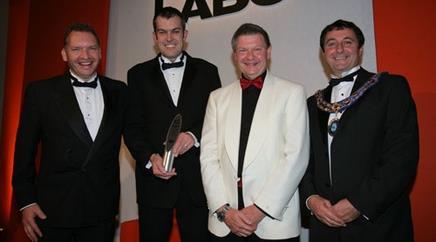LABC New Home Warranty is the Local Authority Building Control’s business partner providing structural warranties and a suite of services to support the planning and build process.
These include: Code for Sustainable Homes assessments, SAP assessments, acoustic and air pressure testing, and Home Information Packs. Together, these can increase the marketability of any development as well as supporting current Building Regulations and saving our clients both time and money.
We are proud to be sponsoring these LABC awards as it rewards excellence and supports the raising of standards across the building industry.
Winner
Tonbridge & Malling Borough Council and Berkeley Homes Kent – The Birchleigh
A development of 12 phases over about 13 years, Birchleigh has combined New England-style architecture with open-plan living and landscaped communal areas.
Energy-efficiency was key to this development, with the houses up to 39% more energy-efficient than traditional properties, and relatively inexpensive to maintain.
Other features include an advanced ventilation system to provide fresh, filtered air and remove moisture particles and odours from the homes. Landscaping has also formed an integral part of the development. The first phase includes a water feature and ornamental waterways, and a small lagoon and green spaces will be provided in the subsequent phases of development. The judges commented: “The emphasis on exceptional quality underpins the team and LABC’s excellent working relationship.”
Runners-up
Bristol City Council and Birakos Enterprises – The Cloisters, Cranbrook Road, Bristol
This was a church converted into seven luxury townhouses in a conservation area. Oxford Architects made maximum use of the existing structure in a sustainable way, which has conserved the local amenity value of the area.
A fire engineered design solution also had to be negotiated, as the dwellings had floors more than 7.5m above the adjacent ground, and domestic sprinklers were used after consultation with the local fire and rescue service.
The project made innovative use of an existing building while balancing site constraints with Building Regulations.
North West Leicestershire District Council, D’zignuk and SG Design Studios – Forest Point
The challenge in this design was to build a contemporary development that sat happily within the splendour of the National Forest and its stunning open countryside.
This aim has certainly been achieved. Huge expanses of glass along specific design angles allow the countryside to remain visible from all living areas. Meanwhile a mix of brickwork and resin-bonded wood panelling ensures the houses fit in with the surrounding area.
Leeds City Council and KW Linfoot – Bridgewater Place
This 110m-tall, 30-storey building dominates the skyline at the gateway to Leeds city centre. This development creates the region’s largest single venue for residential, commercial and leisure use.
Bridgewater comprises two buildings joined by an eight-storey glass atrium; altogether they contain 230,000ft2 of state-of-the-art office accommodation, 200 luxury apartments and 10,000ft2 of leisure and retail space.
London Borough of Wandsworth and St George South London – St. George South London
This development is part of a 10-year housing and commercial regeneration project on a site that was originally occupied by factories and then left empty for decades.
Altogether it will contain 264 affordable apartments once the final phase is completed. Its features include high levels of thermal and acoustic insulation, impulse fans to control smoke in the event of a fire in the 800 space basement car park, and extensive landscaping and communal gardens to improve the local environment. In addition, a riverside wetland has encouraged plants and birds to the area.
Manchester City Council and West Contracting – 10 Rochdale Road
This luxury apartment block offers all anyone could want for elegant city living. Among its attractions are a winter garden, a Zen room, a gym, a jet black 20m swimming pool and even butler service. Motion detection lighting has also been incorporated in all common areas, and low-wattage energy-efficient light bulbs have been used throughout to minimise electricity consumption.
LABC Awards 2008
- 1
- 2
- 3
- 4
- 5
- 6
- 7
 Currently reading
Currently readingBest Housing or Residential Projects
- 8
- 9
- 10
- 11
- 12
- 13




































